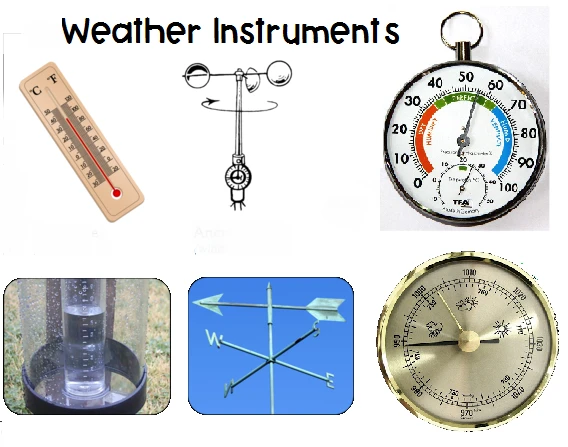Weather Instruments: Essential Tools for Accurate Forecasting

# Weather Instruments: Essential Tools for Accurate Forecasting
Weather Instruments: Essential Tools for Accurate Forecasting
Weather forecasting has come a long way from simple observations of the sky. Today, meteorologists rely on a variety of specialized weather instruments to collect precise data about atmospheric conditions. These tools help predict weather patterns, issue warnings, and provide valuable information for agriculture, aviation, and daily life.
The Most Common Weather Instruments
Modern meteorology uses an array of instruments, each designed to measure specific atmospheric conditions. Here are some of the most essential ones:
1. Thermometer
The thermometer is perhaps the most familiar weather instrument, used to measure air temperature. Modern digital thermometers provide quick and accurate readings, while traditional mercury or alcohol thermometers remain reliable options.
2. Barometer
Barometers measure atmospheric pressure, which is crucial for predicting weather changes. A sudden drop in pressure often indicates approaching storms, while rising pressure suggests fair weather.
3. Hygrometer
This instrument measures humidity – the amount of water vapor in the air. Hygrometers help predict precipitation and are particularly important for agriculture and health monitoring.
4. Anemometer
Anemometers measure wind speed and direction. The most common type features rotating cups that spin faster as wind speed increases, while wind vanes indicate direction.
5. Rain Gauge
Essential for measuring precipitation, rain gauges collect and measure the amount of liquid precipitation over a set period. Modern versions can automatically record and transmit data.
Advanced Weather Measurement Tools
Beyond these basic instruments, meteorologists use more sophisticated equipment for comprehensive weather analysis:
Weather Balloons
These carry instrument packages called radiosondes high into the atmosphere to measure temperature, humidity, pressure, and wind at various altitudes.
Weather Radar
Radar systems detect precipitation, its intensity, and movement. Doppler radar can also detect wind patterns and rotation within storms.
Weather Satellites
Orbiting satellites provide a global perspective of weather systems, tracking storms, cloud cover, and other atmospheric phenomena over large areas.
The Importance of Accurate Weather Instruments
Reliable weather instruments are vital for:
- Protecting lives through severe weather warnings
- Supporting agriculture with planting and harvesting decisions
- Aiding aviation with flight planning and safety
- Improving climate change research with long-term data
- Enhancing energy production planning for renewable sources
As technology advances, weather instruments continue to become more precise, automated, and capable of collecting data in increasingly challenging conditions. This progress leads to more accurate forecasts that benefit everyone from farmers to city planners to outdoor enthusiasts.
Understanding these instruments helps us appreciate the science behind weather forecasts and the importance of maintaining and improving our weather monitoring infrastructure.
Keyword: wether instruments